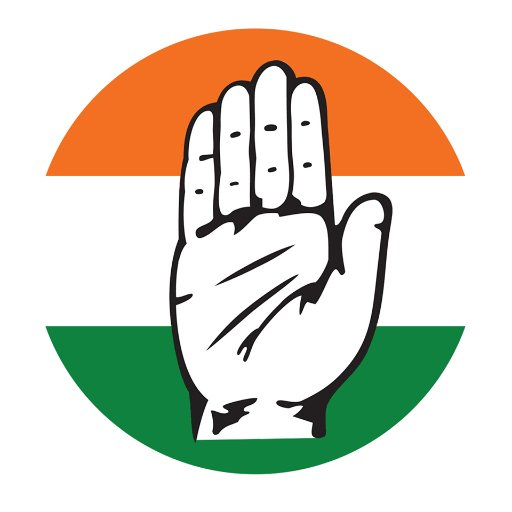Invoking Ambedkar: A Call for Justice, Not a Fashion Statement

- S. Vijaykrishna
Exactly 97 years ago, on December 25, 1927, Dr. B.R. Ambedkar undertook one of the most defining acts of his revolutionary career—the symbolic burning of the ‘Manusmriti’. This historic event, observed during the Mahad Satyagraha, was not merely an act of protest but a bold repudiation of a text that institutionalized caste-based oppression, denied dignity to millions, and perpetuated a philosophy of graded inequality. Ambedkar exposed the irrational and discriminatory ethos of the ‘Manusmriti’, particularly its misogynistic and casteist ethos, as he sought to dismantle its grip on Indian society.
The ‘Manusmriti’ is a code of law and jurisprudence that is both irrational and built on an undemocratic foundation. It perpetually forced women into dependency and denied them basic rights, while also reinforcing a caste-based mode of subsistence. By burning the ‘Manusmriti’, Ambedkar delivered a powerful critique of the hierarchical order it imposed, emphasizing the need to liberate society from its regressive framework. This act symbolized his unwavering commitment to creating a new social order based on the principles of democracy, liberty, equality, and fraternity. Ambedkar’s stance not only challenged the ‘Manusmriti’ but also confronted the deeply entrenched social structures that upheld its authority. Decades later, as the principal architect of the Indian Constitution, Ambedkar enshrined values liberty, equality, and fraternity that directly in contrast to the hierarchical traditions of the past. The Constitution became a framework for dismantling caste hierarchies and fostering an equitable society by replacing the philosophy of social - economic - political monopolization, inequality and oppression with ideals of justice and reform. Ambedkar’s legacy, hitherto, continues to provoke discomfort amongst those who glorify regressive texts and traditions perpetuate inequality.
Union Minister’s Controversial Remarks
This friction emanated from the Union Home Minister Amit Shah’s recent remarks during the 75th anniversary celebrations of the Constitution. In his 45-minute speech, a comment—suggesting that invoking Ambedkar’s name has become “a fashion”—drew widespread criticism. Such comments trivialize Ambedkar’s towering legacy and dismiss the ongoing struggle for justice that his name symbolizes.
Shah’s implication that replacing Ambedkar’s name with deities might offer solace in heaven, undermining the revolutionary essence of invoking Ambedkar. His name is not a rhetorical tool but a call to action—a reminder of the unfinished battle against caste discrimination, gender inequality, and socio-economic disparities. Enchanting the Ambedkar might be distant from offering a spiritual refuge. But Ambedkar’s name represents a moral compass guiding India towards justice and constitutional ideals. His unwavering critique of inequality and his vision for a just society have inspired generations to challenge the status quo. Ironically, those who seek to undermine the Constitution find themselves in antipode to Ambedkar’s enduring influence.
Manusmriti vs. Constitution: The Ideological Clash
The ideological conflict between the ‘Manusmriti’ and the Constitution represents a broader clash of two worldviews: The ‘Manusmriti’ divides and grades people based on caste, confining their social- economic - political rights and opportunities to their birth identity. In contrast, according to the Constitution of India, all are equal and entitled with the fundamental right to dignified life. This ideological clash embodies centralization versus decentralization, oppression versus emancipation, and privilege versus justice. Despite constitutional safeguards, forces rooted in ancient hierarchical traditions continue to persist. Today, these forces are witnessing a resurgence in subtle and threatening ways, such as diluting institutional autonomy, undermining affirmative action, discredit social justice measures, and subverting the Constitution. For instance, amendments to wither away the power of autonomous institutions, dropping the Preamble from textbooks, waiting to exploit loopholes through drafts to weaken reservations, and the controversial lateral entry scheme exemplifying this pushback. Misinformation campaigns against reservations further fuel this regressive agenda.
The resurgence of past conservative ideology inspired by the ‘Manusmriti’ persistently threatens the constitutional vision of a secular, democratic, and egalitarian India. This battle is not just political or legal; it is a civilizational one. Modernized and insidious forms of casteism, patriarchy, and social exclusion are finding new expressions in the political and cultural sphere.
The radical visions of social reformers like Jyotirao Phule, Mahatma Gandhi, Ambedkar, Jawaharlal Nehru, and Periyar continue to inspire movements for equality, caste annihilation and gender equity, making them enduring figures and torch bearers in India’s socio-political landscape. Their legacy remains a bulwark against these regressive forces.
Resistance to Progressive Reforms
The historical opposition to Ambedkar’s reforms underscores the discomfort his ideas continue to evoke. His landmark Hindu Code Bill, which sought to ensure equality, faced fierce resistance both inside and outside Parliament. Although then-Prime Minister Jawaharlal Nehru strongly supported the Bill, declaring, “I will die or swim with the Hindu Code Bill,” the opposition was significant.
Politically, leaders like Shyama Prasad Mukherjee opposed the Bill within Parliament, citing cultural and religious concerns. against it. Anti-Hindu Code Bill committees, led by Akhil Bharatiya Ram Rajya Parishad founder Karpatri Maharaj, organized demonstrations and marched to Delhi in protest. As a result, the bill was stalled. Ultimately in future , Nehru divided the Hindu Code Bill into four separate bills, which were then passed in Parliament.
Such resistance highlights the deep-rooted ideological battle between regressive forces and Ambedkar’s transformative vision.
Such resistance persists even today, as regressive forces attempt to undo progressive measures and discredit social justice narratives. Such as, the need for a caste census. These challenges underscore the ongoing ideological battle between the values of equality and justice and the forces of privilege and exclusion.
A Vision for Justice and Equality
The Constitution is more than a legal document; it is a moral vision for an India free from caste, patriarchy, and social injustice. As Ambedkar emphasized, true justice can only be achieved through social and economic equity. While progress has been made, much remains to be done.
Invoking Ambedkar’s name is not a “fashion.” It is a necessity in a society still grappling with caste-based oppression and social inequality. His ideas continue to haunt those who oppose justice, liberty, fraternity, and equality, reminding us that the fight for a just and equitable society is far from over. Ambedkar’s legacy endures as a beacon for all who believe in the transformative ideals of the Constitution.
As we reflect on Ambedkar’s contributions, the question we must ask ourselves is this: Are we upholding the values he enshrined in the Constitution, or are we allowing regressive ideologies to undo his legacy? The fight for justice is ongoing—and we must rise to meet it by EDUCATING, AGITATING, ORGANISING.
The Author is a Socio-political activist and the member of Indian National Congress.







